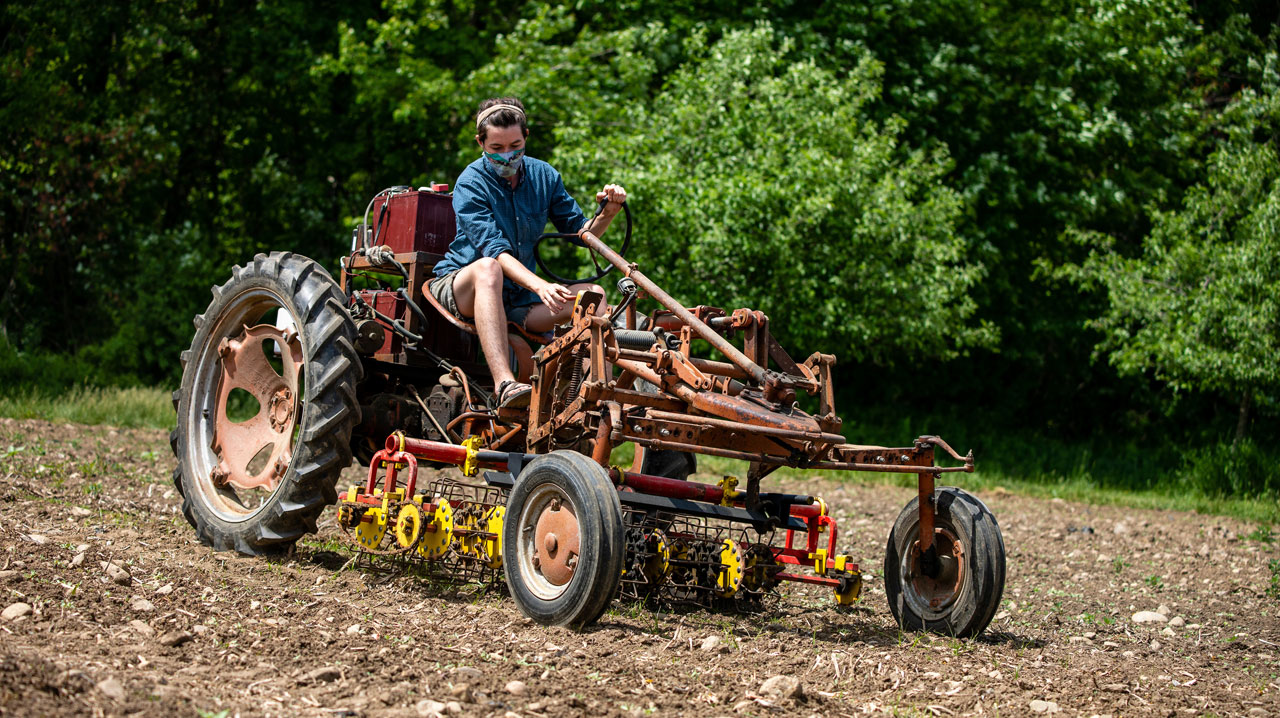
The electric Allis Chalmers G tractor.
When our Case 265 cultivating tractor bit the dust mid-season in 2019, no one was surprised. She had been our Goldilocks tractor. With her sensitive throttle, clutch, and hydraulic lever, everything had to be just right in order to cultivate, and even then, she leaked oil, popped out of gear just when you started getting into the flow of things, and was hard to control whenever a front tire drove over a rock (and our soil has no shortage of rocks!). Mechanics warned us that there wasn’t much life left in our old tractor, so we knew the end was near.
We’ve now gone a full season without a cultivating tractor, and although we had the foresight to shrink the amount of root crops we grew in order to stay on top of weeds manually, the best weeding crew just can’t beat the speed and efficacy of a cultivating tractor. We were delighted to receive a 2021 Local Farmer Award from the Harold Grinspoon Foundation to support the purchase of an Allis Chalmers G tractor that has been converted to battery-power. An electric Allis Chalmers G has been our dream tractor for years. Not only will it be a drastic improvement as far as ease of use goes, it also fits our values well: being more sustainable, easier to train new farmers on, and critical to efficient crop production.
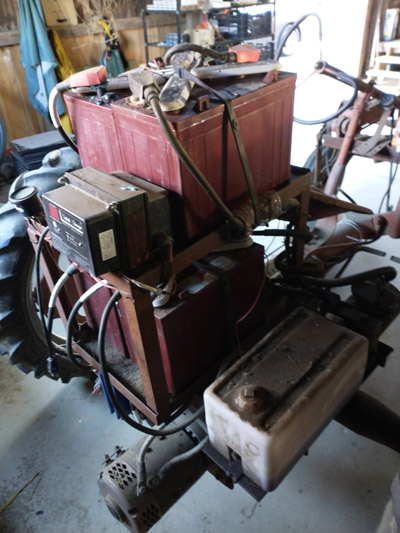
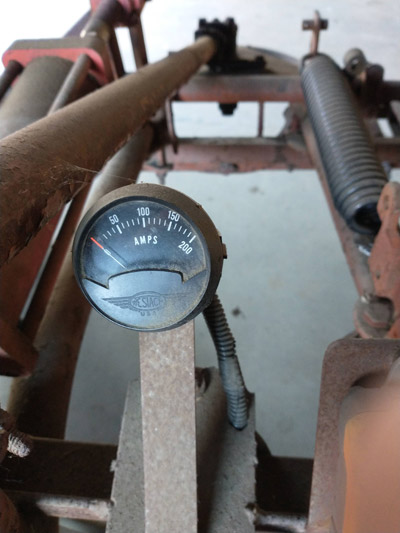
The battery and the electric gauge. Photos courtesy of Kaylee Brow.
The Details
On average, one of our crew members can crawl-weed a bed of carrots at a rate of 300 minutes per 150-foot bed without a basket weeder. On a tractor it takes one person under 10 minutes per bed, even when the carrots are small and hard to see. Being able to cultivate a few times before our weed crew gets to the carrots allows us not only to quickly kill weeds that could overtake the carrots but to define the rows by keeping the earth between them clean. This in turn increases the efficiency of any hand cultivation we may still have to do.
Luckily, we already have a basket weeder which, with a few modifications, can easily be accommodated by the G. As an added benefit, the G we want to buy is already converted to electric power, meaning we don’t have to do the conversion ourselves. This tractor will likely increase productivity in other areas of the farm as well: each bed we tractor-cultivate will result in a savings of 290 minutes of labor that can be put towards other production needs. This labor savings also translates to a lower cost of production for our root crops.
The tractor itself costs $3,000. A farmer in our community is selling it and has maintained it well. The beauty of an electric tractor is that the engine and fuel systems are taken out, greatly reducing the need for maintenance. We will buy fresh batteries for $1,000, as they are several years old and weren’t always kept topped off with electrolytes. (The farmer has been very generous with the lessons he’s learned owning the tractor, setting us up to take care of it well into the future.) Retrofitting our existing basket weeder to fit will cost just $100. Total costs will therefore be $4,100. The Grinspoon Foundation is generously providing $2,500, and we have adjusted Book & Plow’s independent operating budget to cover the remaining $1,600.
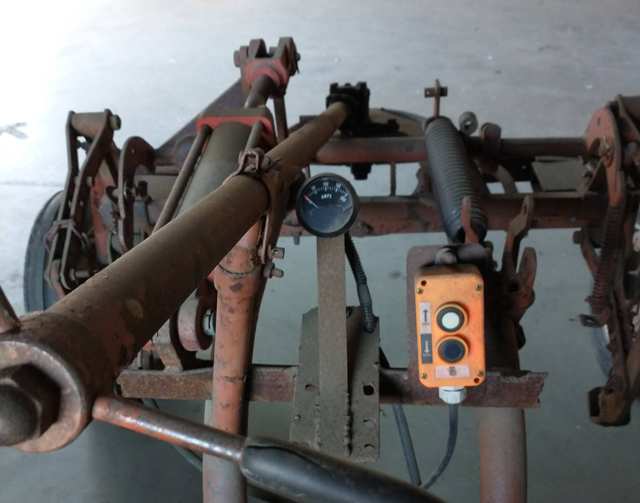
The view from the driver’s seat. Photo courtesy of Kaylee Brow.
Quantifying the Benefit
Our records from 2017 to 2019 show us that our root crop sales are limited only by how much we can grow: we produced about 15 percent of the carrots used by Amherst College Dining, our main customer. We are confident that an increase in yield will be directly related to an increase in sales. Any surplus or “seconds” we produce goes directly to our CSA as well as the Amherst Survival Center and other hunger relief organizations, which has been particularly important in this year of the pandemic. (Book & Plow recently received a state Food Insecurity Infrastructure Grant to support its commitment to reducing food insecurity in Western Massachusetts.) With the purchase of a cultivating tractor, we can easily justify an increase in our root production knowing we’ll be able to weed them and have demand for them.
We know that getting an electric G will be a real game-changer for our farm. We’ve already experienced the efficiency that comes with a cultivating tractor, albeit a finicky one. This new tractor will allow us not only to grow more food with less effort but to reduce our consumption of fossil fuels. It will also empower our student employees, teaching them an important new skill rather than having them perpetually crawl-weeding carrots.
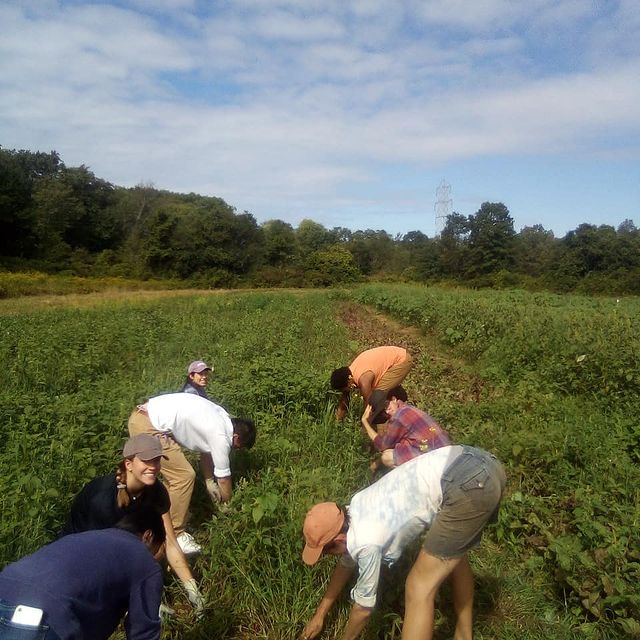
The old way: (left to right) Nekhoe Hogan ’20, Cameron Matsui ’22, Yordi De Leon’22, Meg Parker ’20, Sophie Chen ’22, farm fellow Julia Herion-Cruz and Kaylee Brow pull weeds by hand.
